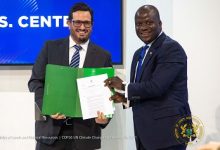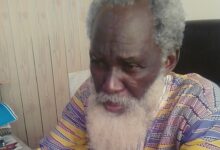
The Upper East Regional Wild Life Manager, Mr Joseph Binlinla, has observed that one of the major interventions that could be employed to help conserve biodiversity and economic empowerment of communities was through the Community Resource Management Areas (CREMA) concept.
Under the CREMA concept, community members were empowered to manage the natural resources within their geographical areas to help preserve and conserve biodiversity.
The Regional Manager made the observation during the swearing in of new executives of the “Sanyiga Kasena Gavara Kara CREAMA” into office at Nakong in the Kassena-Nankana District on Thursday.
He stated that once the executive members had been granted the mandate and power by the Ministry of Lands and Natural Resources to operate, they had all the necessary support to help manage natural resources in their jurisdiction.
“With this granted power, you have the power to stop politicians or anybody or groups of people who would want to abuse the natural resources such as the forest reserves and biodiversity,” he stressed.
The programme was organised by Organisation for Indigenous Initiatives and sustainability (ORGIIS Ghana), an Environmental NGO through Noé, ECONOBIO with funding from Agency Franciase deDevelopment (AFD).
The programme, which attracted stakeholders including traditional and opinion leaders, Assembly members among others, was aimed at developing green value chains for the benefit of local populations living on the outskirts of biodiversity-rich areas with the support of the private sector and civil society.
The occasion served also as a platform to present three tricycles worth GHC33,600 to Sanyiga Kasena Gavara Kara CREAMA to facilitate their operations.
The Executive Director of ORGIIS–Ghana, Mr Julius Awaregye, stressed that as local stakeholders, there was an urgent need to strengthen the CREMA, provide them with adequate trainings and equipment to patrol and decrease harmful activities and also develop sustainable economic activities such as the establishment of shea nut ware houses, grinding mills for shea butter and capacity building for the CREAMA operational areas.
He said over the years, his outfit with funding from AFD and other donors had established a number of facilities, such as shea nuts and baobab warehouses, grinding mills, as well as empower the group, particularly women to go into small scale enterprises in the CREAMAs.
He noted that as a result of the CREAMAs, some selfish people who were engaged in the destruction of the natural resources had been arrested, and that served as a deterrent to others thereby reducing the canker.
The Programmes Manager of ORGIIS–Ghana, Mr Clifford Adagnera Amoah, mentioned that one of the activities of the CREAMA initiated by his outfit was the development of economic activities such as shea butter, honey and beeswax and baobab value chains – certified organic and fair trade backed by improvement in ecosystem services.
He mentioned some of the beneficiary communities as Wuru, Kwapun, Kunchogu, Banu, Pudo,, Basisan, Nkong, Katiu, Kyoro all within the western wildlife corridor under the Tumu, Nkong, Katiu and Kayoro traditional areas and Sissala East and Kassena-Nankana West Districts. The CREAMAwas managed by an Executive Committee represented by selected members of Community Resources Area Management Committee.
He added that the Western Wildlife Corridor was part of Mole Landscape linking the Mole National Park and the Nazinga Game Ranch which were fast degrading at the expense of the poor rural population directly depending on natural resources.
FROM SAMUEL AKAPULE, NAKONG







